The 30th
LaureateArchitecture
Christian de Portzamparc
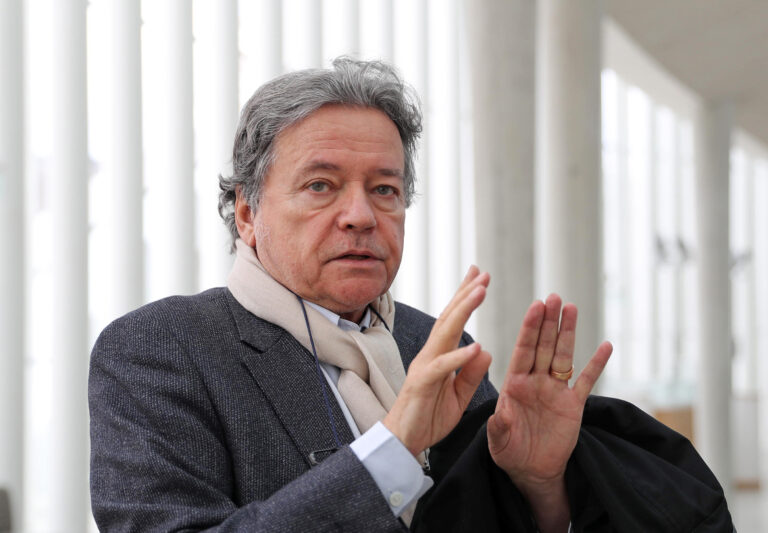
Christian de Portzamparc is a leading French architect and urban planner,who was awarded the Pritzker Architecture Prize at the age of 50 as the first French winner. His imaginative architectural style is known for its distinctive features such as bold designs,an artistic approach and the creativity that comes from him also as a watercolor painter. He is especially esteemed as a designer of concert halls. He studied architecture in Paris and New York,and became famous for his work in President Mitterrand’s project called the City of Music (1995). This project was a large scale project which involved creating music halls of different sizes,a music museum and many dwelling places. His important works include NexusⅡ (1991) ,an residential complex in Fukuoka,LVMH Tower (1991),a skyscraper of New York,Philharmonie Luxembourg (2005),City of Arts (2013),a cultural complex in Rio de Janeiro,and Paris La Défense Arena (2017 ),an indoor stadium in Nanterre,on the outskirts of Paris. Currently he is engaged in a large scale project in China,Suzhou Cultural Center,scheduled to be completed in 2019.
Biography
Christian de Portzamparc is a leading French architect and urban planner,who was awarded the Pritzker Architecture Prize at the age of 50 as the first French winner. His imaginative architectural style is known for its distinctive features such as bold designs,an artistic approach and the creativity that comes from him also as a watercolor painter. He is especially esteemed as a designer of concert halls and urban planner.
He studied architecture at the Ecole Nationale des Beaux Arts in Paris. He then moved to New York living in the artistic community during 1966,and in 1970,he graduated from the Ecole Nationale des Beaux Arts. He established Atelier Christian de Portzamparc in 1980 and started his career as an architect.
He was interested in painting and sculpture since childhood,but he only became interested in architecture later on. “When I was 15 years old,I discovered a drawing of Le Corbusier and my artistic interest turned immediately on architecture.” However,his style is different from the modernism of Le Corbusier. Christian de Portzamparc is recognized as an architect who puts more importance in the interaction between urban space and human being.
He started to make a name for himself for his work in the Les Hautes Formes housing project (1979) in Paris,and he became famous for his President Mitterrand’s project called the City of Music (1995),and the City of Music was a large scale project which involved creating music halls of different sizes,a music museum and many dwelling places.
His important works include NexusⅡ (1991),a residential complex in Fukuoka,the Philharmonie Luxembourg (2005),concert hall which is also the headquarters of the Luxembourg Philharmonic Orchestra,the French Embassy in Berlin (2003) with his wife Elizabeth de Portzamparc.
In New York,after the LVMH Tower (1999) on 57th street,he designed the residential tower Prism Tower on Park Avenue,approved by the City Planning authorities in 2004,which was opened in late May 2015. And completed in 2014,with its 300 meters high,the One57 tower in New York which is hosting a luxury hotel in the first 20 floors and 130 super-luxury condominiums which offers breath-taking views of Central Park and the “skyline” of the city.
He created,the Hergé Museum (2009) in Louvain,the City of Arts (2013),a cultural complex in Rio de Janeiro and the Paris La Défense Arena (2017),an indoor stadium in Nanterre,on the outskirts of Paris. After competitions he is currently engaged in large cultural projects: in Morocco the large theater of Casablanca transforming the central historic piazza of the city,to be completed in 2019,and two large scale projects in China: the Suzhou Cultural Center and an opera house for Shanghai,both to be completed in 2019.
Christian de Portzamparc does not reject the form,but he says that his aim is not just aesthetical achievement in itself,and that any shape in his design must face several good reasons to exist,a better use and comfort,producing happiness and poetic feeling,a connection with the existing building site transforming it.
Christian de Portzamparc has never separated architecture and urbanism. Building a neighborhood is a crucial achievement for him. He renewed the vision of the urban structure through his method called the “open block”,that he practiced in the Massena neighborhood in Paris. The scheme is now used in many new urban developments. The office is an urban laboratory focusing on research about the new city through many urban studies as a consequence. In 2004 he won the Great Urbanism Prize and in 2006,the “Collège de France” created a 53rd chair dedicated to “artistic creation.” Christian de Portzamparc was its first holder.
He shares an architectural firm “2Portzamparc” with his wife Elizabeth,who is also a renowned architect and urban planner.
Chronology
Cafe Beaubourg,Paris
Musée Bourdelle,Paris
The member of AIA
Philharmonie Luxembourg,Luxembourg
-
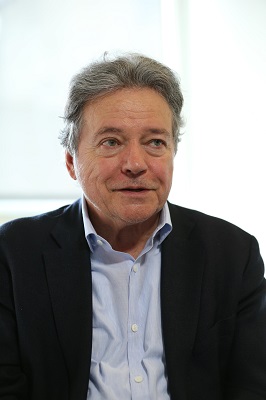
Christian de Portzamparc
-
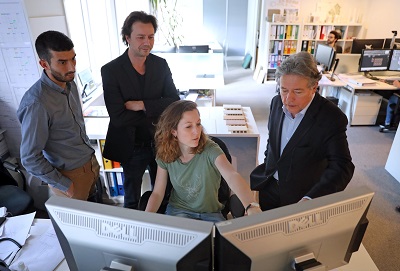
At his studio in Paris
-
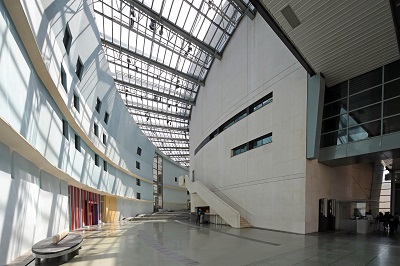
Corridor of City of Music
-
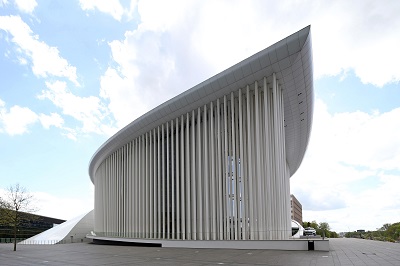
Philharmonie Luxembourg
-
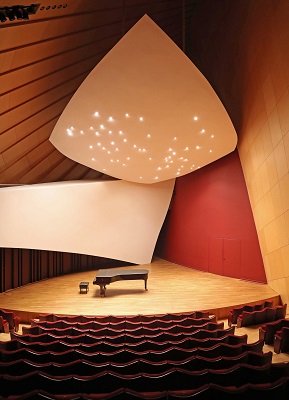
Philharmonie Luxembourg
-
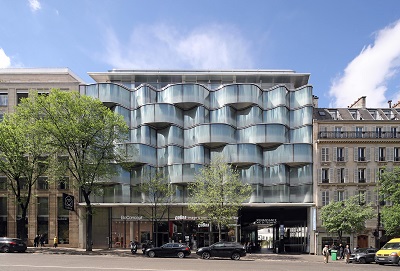
Hotel Renaissance
-
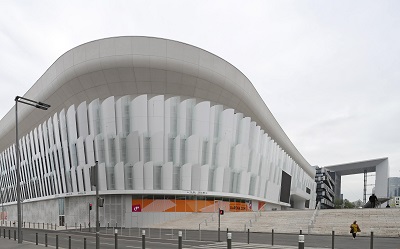
Paris La Défense Arena
